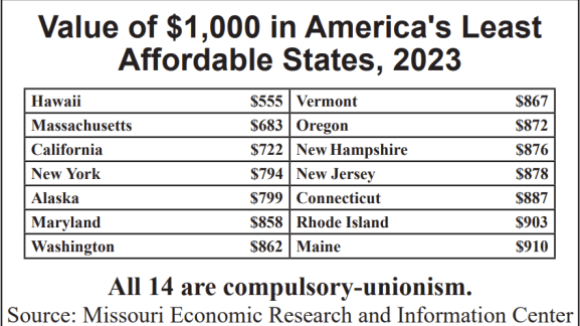Commentator Michael Barone offers some good insights (see the first link below) regarding the latest payroll employment data from the U.S. Labor Department.
As Barone points out, the data for Texas, America’s largest Right to Work state, since the Great Recession began at the end of 2007 are certainly impressive:
If I’m reading the Texas numbers correctly, Texas has only had what look like short pauses in job creation and from the start of the recession in December 2007 to January 2013 had 875,000 new jobs. During that time, according to these figures, the nation lost 3,794,000 jobs. Texas is clearly doing something right.
(The Bureau of Labor Statistics data cited by Barone in this passage and below are available at the second link.)
But the fact is, Texas is far from the only Right to Work state that is outperforming the national average in job creation by a wide margin. In fact, from 2002 to 2012, Right to Work states as a group experienced a 6.4% increase in private-sector payroll employment. That’s well over double the national increase of 2.7% and 16 times forced-unionism states’ aggregate gain of just 0.4%.
(In the above analysis, Indiana, whose Right to Work law took effect in 2012, is excluded. Michigan, whose newly adopted Right to Work law takes effect later this month, is counted as a forced-unionism state.)
The correlation between Right to Work status and private-sector job growth over the last 10 years is robust. Within the three U.S. Census regions of the West, the Midwest and the South, Right to Work states outperformed forced-unionism states in job creation by wide margins. (No Right to Work states are located in the Northeast.) Thirteen of the bottom 15 states for private-sector job creation from 2002 to 2012 are forced-unionism.
State unemployment numbers: Texas is doing something right


